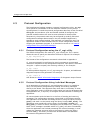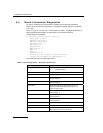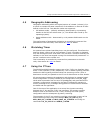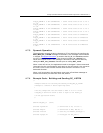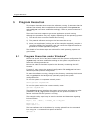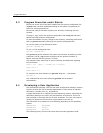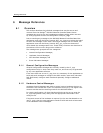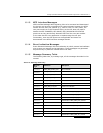
5 Program Execution
32
5 Program Execution
This chapter describes how to start the software running. It assumes that the
software has already been installed and the configuration files system.txt
and config.txt have been modified accordingly. Refer to previous sections if
unsure.
There are three main stages to get a new application up and running
although the procedure may vary slightly depending on the operating system.
1) The device driver must be installed and running.
2) The protocol software running on the host must be run up.
3) Write your application (making use of the examples supplied), compile it
(using the header files supplied), and link it with the supplied libraries to
generate a finished application program.
The details of how these steps are achieved for each operating system are
given below.
5.1 Program Execution under Windows
®
Ensure the device driver has been installed and the system configuration file
(system.txt) has been modified according to the system requirements to
select the correct protocols etc.
Ensure the code file has been copied to the directory containing the SS7
binaries.
If using s7_mgt, ensure the protocol configuration file config.txt has been
edited to provide protocol configuration.
To start the software running, change to the directory containing the binaries
and run gctload in the background, optionally specify the system
configuration file.
To run the system in a separate console, enter:
start gctload -csystem.txt
To run the system within the current console, enter:
gctload -csystem.txt
The gctload program initializes the system environment and starts up other
processes. The s7_mgt process configures all the protocol modules. A
banner confirms that the system is running.
The example utility mtpsl may be used to activate and deactivate signaling
links as follows:
mtpsl { act | deact } <linkset_id> <link_ref>
mtpsl act 0 0
mtpsl deact 0 0
The host software can be shutdown by running gctload from the command
line using the –x command line option as follows:
gctload -x



